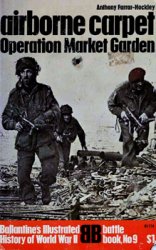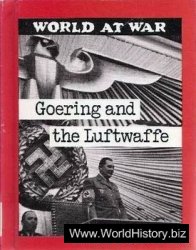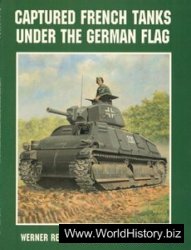Following a three and a half hour artillery and trench mortar preparation, we were to seize the French strong points of Labordaire, Central, Cimetiere, and Bagatelle.
The enemy had been working on these positions since October 1914. For weeks the regiment had been making basic preparations for this attack. Close behind the front line in shell-proof emplacements, medium and heavy mortars had been sited. Day and night, reserve companies brought up supplies, dismantled mortars, and ammunition through the narrow communication trenches. The French harassing fire had increased in violence, and many a carrying party had been hit. Toward the end of June and after a few days in the rest camp, the 9th Company headed back into the line. We were amazed to see large numbers of medium and heavy artillery emplaced and camouflaged in the vicinity of Binarville. It was pleasant to note that adequate ammunition seemed to be available. This time we moved up into position in the best of spirits.
The regiment prepared detailed plans for the five assault companies. During the preparation, my platoon remained in reserve about two-thirds of a mile north of “Central.” Shortly before the jump-off, we were to move up behind the line of departure, follow the assault echelon closely, and keep it supplied with grenades, ammunition, and entrenching equipment.
At 0515 on June 30, the artillery opened up with everything it had including 8.3 and 12-inch mortars. The effect of the shells was unbelievable. Earthen geysers shot into the air, craters suddenly appeared before us. The strong French earthworks was smashed apart as if hit by gigantic trip hammers. Men, timbers, roots, obstacles, and sandbags flew into the air. We wondered how the enemy felt, for we had never seen such a massing of heavy fire before.
One hour before the assault, the medium and heavy mortars opened up on the blockhouses, wire entanglements, and breastworks. The French massed their artillery fire to break up the assault, but their efforts were futile. Our forward line was thinly held and was too close to the main hostile position. The French guns ploughed up the dirt farther to the rear. One round dug in a hundred yards ahead of me and tossed the mortal remains of a Frenchman who was killed in January up into the trees. I kept looking at my watch. We had fifteen minutes to go. A blue-gray pall of smoke from the bombardment obscured vision as both sides increased their volume of fire.
The communication trench assigned us was exposed to strong hostile fire, and I decided to deviate from my orders in displacing to the side for about one hundred yards.
We ran for our lives across the open stretch of ground and found shelter down in the hollow; then, through the communication trench, we rushed into the front line with French standing barrages bursting all around. The storm troops were lying side by side, and across from us the last gun and mortar shells were bursting.
0845, and our assault moved forward over a wide front. French machine guns poured out their fire; the men jumped around craters, over obstacles, and into the enemy position. The assault echelon of our company was hit by machine-gun fire from the right and a few fell, but the bulk rushed on, disappearing in craters and behind embankments. My platoon followed. Each man had his load, either several spades or else sacks filled with grenades or ammunition. The French machine gun to the right was still hammering away. We passed through its field of fire and climbed over the walls on which the 9th Company stood on January 29. The position was a mass of rubble. Dead and wounded Frenchmen lay scattered through the tangle of revetments, timbers, and uprooted trees. These revetments had cost many a Frenchman his life.
To the right and in front of us hand grenade fights were in progress, and from rearward positions French machine guns swept the battlefield in all directions and forced us to take cover. The sun was hot. Stooped over, we moved off to the left and then, hard on the heels of our company's assault echelon, pressed on to a communications trench leading to the second position (Sketch 13)
Our artillery had shifted its fire to the second French line (Central II), located 160 yards to the south, which was to be captured on July 1 only after renewed artillery and mortar bombardment. The assault echelons of the regiment not engaged in mopping up Central I, were pushing on toward Central II.
About thirty yards ahead of us a violent hand grenade fight raged, and beyond that we could see the outlines of Central II some ninety yards distant. French machine-gun fire made it impossible to move outside the communication trench, and our own assault group up forward seemed to be stalled. Its young leader, Ensign Moricke, was lying in the trench severely wounded with a bullet in his pelvis! I wanted to carry him back, but he said that we should not worry about him. Stretcher bearers took charge. One last handclasp and I assumed the command up front. The Ensign died the next day in the hospital.
We engaged the garrison of Central II. Our own artillery had ceased firing. A few salvos of hand grenades followed by a charge, and we were in Central II.

Sketch 13
The storming of “Central II,” 30 January, 1915.
Part of the garrison ran down the trench, others fled across the open fields, and the rest surrendered. While part of the outfit worked to widen the breach, the bulk of the assault force kept pressing south. We moved through a ten-foot-deep communication trench and had the luck to surprise and capture a French battalion commander with his entire staff who offered no resistance. About one hundred yards down the line the trench opened on a large clearing. In front of us the terrain dropped sharply down to the valley at Vienne-le-Chateau, which was obscured from view by the woods. We lost contact on both flanks and to the right.

A French Battalion Command Post in “Central II.’
On the edge of the forest some two hundred yards away we saw a considerable number of the enemy. We opened fire and after a sharp fire fight they withdrew into the woods. While this was going on I established contact on my left with elements of the 1st Battalion who had advanced this far; and I also reorganized my command, which by this time included elements of all units of the 3rd Battalion, and deployed it in a defensive position some 350 yards south of Central II. Because of our exposed right flank and since we still heard the sounds of bitter fighting behind us, I felt it inadvisable to continue the advances to the south. Also the memory of January 29, when I went so far out front that I lost all support, was still fresh in my mind.
A reconnaissance detachment reported that the unit on our right had been unable to clear Central I.
This meant we must prepare blocking positions to protect our newly-won positions against attacks from the west. To bolster the defence I put my best veterans in line and was glad of it, for during the next few hours the French launched a series of violent counter-attacks to regain their lost positions. I kept the battalion commander informed of developments.
On the left some companies of the 1st Battalion had advanced down the valley as far as Houyette gorge. Combat outposts reported strong enemy forces in the woods on the slope 330 yards ahead. I discussed the situation with Captain Ullerich, the commander of the 1st Battalion, and he decided to have the 1st Battalion dig in on the left of the 9th Company.
We wasted no time in getting to work. I kept one platoon in reserve and used it to bring up ammunition and hand grenades and for work on the flank position in Central II. French reconnaissance detachments were probing our front, but we drove them off without trouble.
Digging was easy, and in a short time our trench was better than three feet deep. Since the start of the attack the French artillery had been rather quiet, but now it opened up on Central II with every weapon at its disposal. The French apparently believed we occupied the place in force, for their ammunition expenditure was very heavy. The net result was to smash up their own position and cut our communications to the rear. Supplies ran a gauntlet of fire, and our lone wire was soon knocked out. We did succeed in emplacing one heavy machine-gun platoon in the company sector.
By evening our trench was five feet deep, and the French artillery was still falling behind us. Suddenly bugle calls rang out in the woods; and the enemy, in his usual massed formation, rushed us from the woods an eighth of a mile away. However, our fire soon drove him to earth. There was a slight fold in the ground, and as a result we picked up targets from our trench only when they came to within ninety yards of our position. Perhaps a position farther back near Central II would have been better. We certainly would have had a good field of fire; but, on the other hand, the French artillery would have punished us severely. The French attacked with vigour, and hand grenade fights continued all over the place even after it became quite dark. Our supply of grenades was limited and we did most of our fighting with the rifle and heavy machine gun. The night was black and the smoke from bursting grenades reduced the effectiveness of our rocket flares. Grenades burst all around us, for the enemy was within fifty yards of our position. The fight waxed and waned all night, and we beat off all attacks. At daybreak we made out a sandbag wall some fifty yards away and all sounds indicated that the enemy were busily engaged in digging in behind their improvised shelter. The French infantry kept us on the go during the night and their artillery then took over the morning shift. Fortunately the bulk of artillery fire landed in Central I and II with but a small fraction striking close to our position, and a hit in the front line was a great rarity. So we felt comparatively secure and did not envy the carrying parties who had to move rations and other supplies up through the shell-plastered communication trenches.
We spent the succeeding days in improving the position. The trench was soon six feet deep; we constructed small wood-lined dugouts, installed armoured shields, and sandbagged firing points. The front-line losses from artillery fire were few, but we lost men daily in the shell-torn communication trenches leading to the rear.
The strong artillery concentrated for the June 30 offensive moved to another front, and our weak organic artillery lacked sufficient ammunition to give us worthwhile support. However, an artillery observer was always up front, and we in the infantry appreciated this very much.
During the early days of July, the enemy began to wreck our trenches daily with fin-stabilized mortar fire delivered from positions that permitted a certain degree of enfilade fire. These mortars are of simple construction and provided but little lateral dispersion; consequently he obtained a high percentage of direct hits, and it was not always possible to evacuate the dangerous localities in time to avoid losses. Our casualties were considerable, several men being killed by the blast effect of the 100 pound projectiles alone.
During July, I began a five week assignment as substitute for the commander of the 10th Company in a sector where relief was furnished by the 4th and 5th Companies. We company commanders worked on a unified plan for construction of shell-proof multi-entrance dugouts twenty-six feet underground. This work went on day and night with several parties working on one dugout from different directions. The officers pitched in, and we found that sharing the work helped morale.
Frequently an entire position was flattened by artillery inside of an hour. When this happened we saw our lightly timbered dugouts collapse like cardboard boxes. Fortunately, the French bombardment followed a rigid plan. Usually they began on the left and traversed right. To remain under heavy fire proved too expensive; so whenever it started, I evacuated the trench and waited until they moved their fire laterally or shifted it to our rear area.
If French infantry had followed their artillery and attacked us, then we would have thrown them out with a counterattack. This did not bother us because, man to man, we felt ourselves to be superior.
The Central I operation repeated itself, and we began to drive short saps and mine tunnels toward the enemy position. Early in August my company relieved the 12th Company in the Martin sector. This outfit needed relief following heavy losses sustained the day before in an attack made after the blowing of a mine tunnel. The relief was made at dawn without incident, but we were hardly in the position before the French artillery opened up, and we spent some tense moments flat on our faces with enemy dead lying all around us. When the fire slackened and died down we got our spades working and began deepening the position. Once the trench was eight feet deep and had had numerous small dugouts set into the forward wall, we stopped worrying about the French field artillery. Anyway I wanted to come out with the same number with which I went in.
The heavy spade work paid; and two days later, in spite of much harassing fire, we left the position with only minor casualties. Near the middle of August, I turned over the company to my relief and took a fourteen day leave, my first of the war.
Observations: On June 30, in order to deceive the enemy as to the time of attack, there were numerous breaks in the three-and-a-half hour artillery and mortar preparation. In spite of very heavy fire the hostile position was not completely destroyed, and a few machine-gun nests still put up resistance during the attack.
The great offensive power of the German infantry was again evident. It did not stop on the initial objective but went ahead and seized the next French positions. The speed of attack was such that a battalion commander and his staff were surprised and taken prisoner. The switch from successful offense to defence was made rapidly; and since the French were thoroughly familiar with their old positions, we avoided using them. Detailing of carrying parties for ammunition and tool supply was excellent foresight, for French retaliatory fire prevented the re-supply of the assault echelon for several hours and also interrupted telephone communications.
On July 1, rifle and machine-gun fire played a dominant role in the repulse of French counterattacks launched against us from the nearby woods.
Before daybreak and using a sandbag wall as cover, the French infantry dug in some fifty yards in front of our line. Apparently a part of these sandbags had been taken along during their attack or had been brought up by rear units after the attack bogged down.
In the weeks following our attack, when strong enemy artillery fire was directed at the position, sections were evacuated frequently in order to reduce losses. Current infantry regulations allowed a company commander on the defence to execute local retirements when subjected to heavy harassing fire.




 World History
World History









